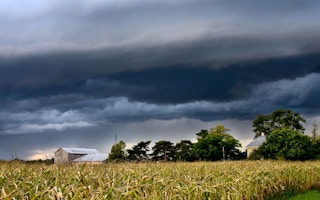Prediction is very difficult, especially if it is about the future, the great physicist Niels Bohr once observed. Eric Fischer, a climate scientist at ETH-Zurich, has just arrived at much the same conclusion.
Fischer and colleagues reported in Nature Climate Change that their attempts to look at weather patterns even in the near future delivered very large uncertainties. This, they report, is a consequence of something sometimes called the butterfly’s wing effect and sometimes chaos theory.
Meteorologists are fond of saying that the flap of a butterfly’s wing in Brazil could set up a chain of air movements that might end with a tornado in Texas. Even the tiniest change in the initial starting conditions can produce wildly different outcomes later.
Fischer and his fellow researchers simply wanted to solve a puzzle for the farmers, decision-makers and civic authorities who must prepare for floods, heat waves and ice storms in the next decade or two, and who have already been urged to face up to the need to adapt to climate change.
The Zurich team used a climate model to simulate extremes of temperature and precipitation between the periods 2016-2035 and 2041-2060. They matched the model with real, historical data from 1950 to 2005, they assumed that greenhouse gas emissions would be the same in all simulations, and they ran the model 21 times, each time making a tiny random variation in the global atmospheric temperature on the first day: 1 January 1950.
Big changes certain
This variation truly was tiny: no more than one hundred billionths of a degree Celsius. It was the thermal equivalent of the beat of a butterfly’s wing. And yet, each time, it produced huge variations in the predicted extremes for various spots of the globe: variations in the coldest temperatures of between -1°C and 7°C, for example.
This would not be much help to a farmer wondering what to plant on any particular farm, or a local authority wondering whether to economise on grit for icy roads.
“Our study reveals that we have to live with uncertainties in local, medium-term projections”, said Fischer. But although the chaotic outcomes meant that precision forecasting was impossible the results nevertheless confirmed that there would be big changes over very large areas.
Heat extremes will become significantly more intense on two-thirds of the land surface within the next three decades; rainfall will increase by 10% in one quarter of the land area and by less than 10% in the remaining three quarters.
South-east US at risk
In Europe, the USA, China and Australia, the intensity of heat waves will increase in the next 30 years, and heavy rainfall will increase in the next 50 years.
“The different models agree that changes in extreme weather events will occur and how strong they will be, but not where they will be strongest,” said Fischer. “This is largely determined by chaos.”
One area likely to experience dramatic change and devastating extremes, however, is the south-eastern United States, according to Keith Ingram of the University of Florida, who has just edited a new book intended to consider the possible consequences of climate change for Florida, North and South Carolina, Virginia, Tennessee, Kentucky, Arkansas, Mississippi, Alabama and Puerto Rico. More than one in four citizens of the US lives in these states.
“The Southeast already experiences extreme weather events including floods, droughts, heat waves, cold outbreaks, winter storms, severe thunderstorms, tornadoes and tropical cyclones”, said Ingram.
“In the future, these events are likely to become more frequent or more severe, causing damage to most of our region’s agriculture. The sooner we make preparations, the better off we will be.”








